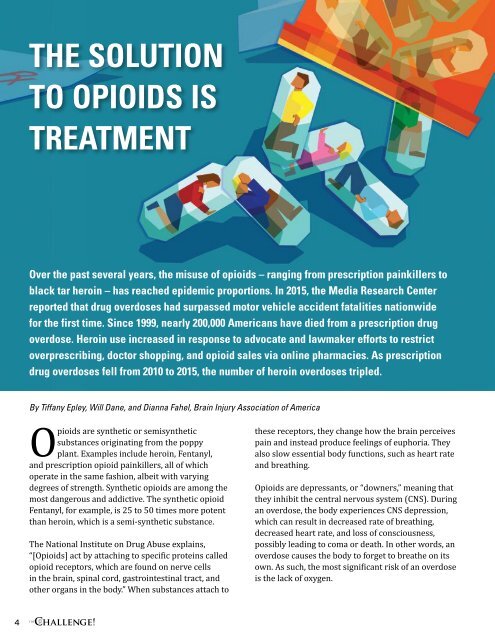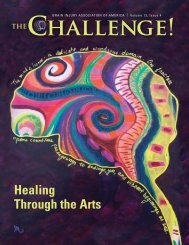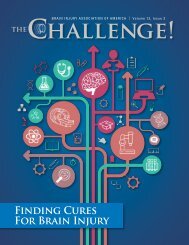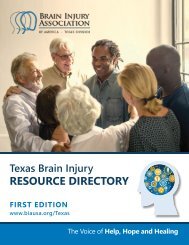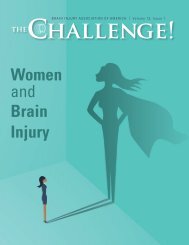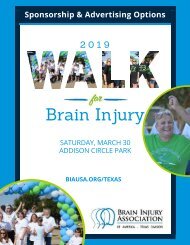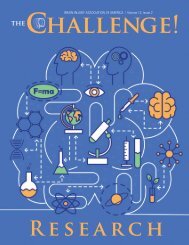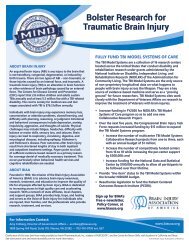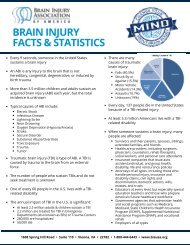THE Challenge! Non-Traumatic Brain Injury
You also want an ePaper? Increase the reach of your titles
YUMPU automatically turns print PDFs into web optimized ePapers that Google loves.
<strong>THE</strong> SOLUTION<br />
TO OPIOIDS IS<br />
TREATMENT<br />
Over the past several years, the misuse of opioids – ranging from prescription painkillers to<br />
black tar heroin – has reached epidemic proportions. In 2015, the Media Research Center<br />
reported that drug overdoses had surpassed motor vehicle accident fatalities nationwide<br />
for the first time. Since 1999, nearly 200,000 Americans have died from a prescription drug<br />
overdose. Heroin use increased in response to advocate and lawmaker efforts to restrict<br />
overprescribing, doctor shopping, and opioid sales via online pharmacies. As prescription<br />
drug overdoses fell from 2010 to 2015, the number of heroin overdoses tripled.<br />
By Tiffany Epley, Will Dane, and Dianna Fahel, <strong>Brain</strong> <strong>Injury</strong> Association of America<br />
Opioids are synthetic or semisynthetic<br />
substances originating from the poppy<br />
plant. Examples include heroin, Fentanyl,<br />
and prescription opioid painkillers, all of which<br />
operate in the same fashion, albeit with varying<br />
degrees of strength. Synthetic opioids are among the<br />
most dangerous and addictive. The synthetic opioid<br />
Fentanyl, for example, is 25 to 50 times more potent<br />
than heroin, which is a semi-synthetic substance.<br />
The National Institute on Drug Abuse explains,<br />
“[Opioids] act by attaching to specific proteins called<br />
opioid receptors, which are found on nerve cells<br />
in the brain, spinal cord, gastrointestinal tract, and<br />
other organs in the body.” When substances attach to<br />
these receptors, they change how the brain perceives<br />
pain and instead produce feelings of euphoria. They<br />
also slow essential body functions, such as heart rate<br />
and breathing.<br />
Opioids are depressants, or “downers,” meaning that<br />
they inhibit the central nervous system (CNS). During<br />
an overdose, the body experiences CNS depression,<br />
which can result in decreased rate of breathing,<br />
decreased heart rate, and loss of consciousness,<br />
possibly leading to coma or death. In other words, an<br />
overdose causes the body to forget to breathe on its<br />
own. As such, the most significant risk of an overdose<br />
is the lack of oxygen.<br />
4


